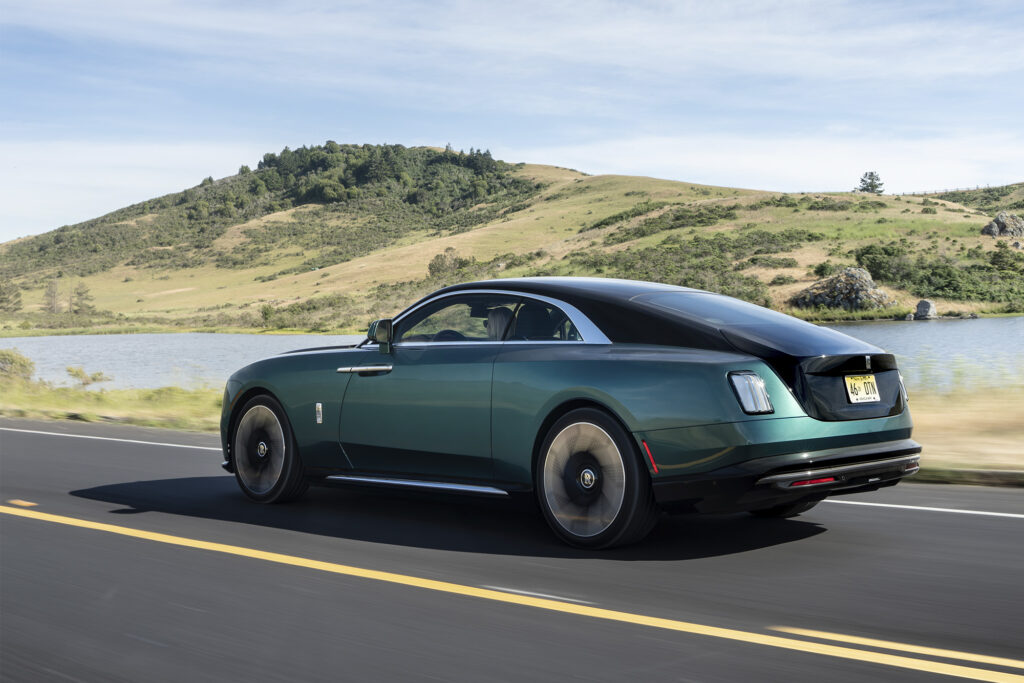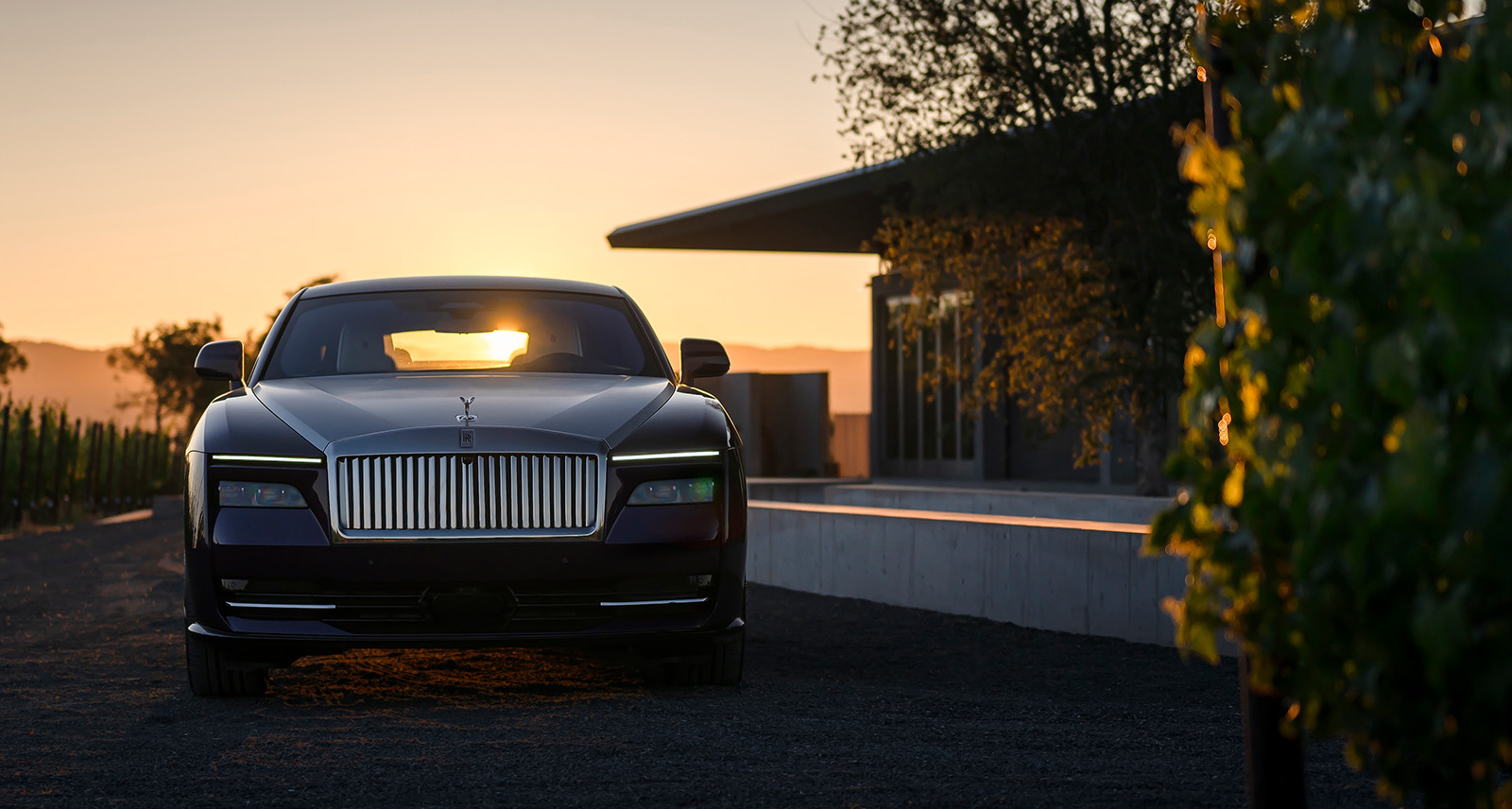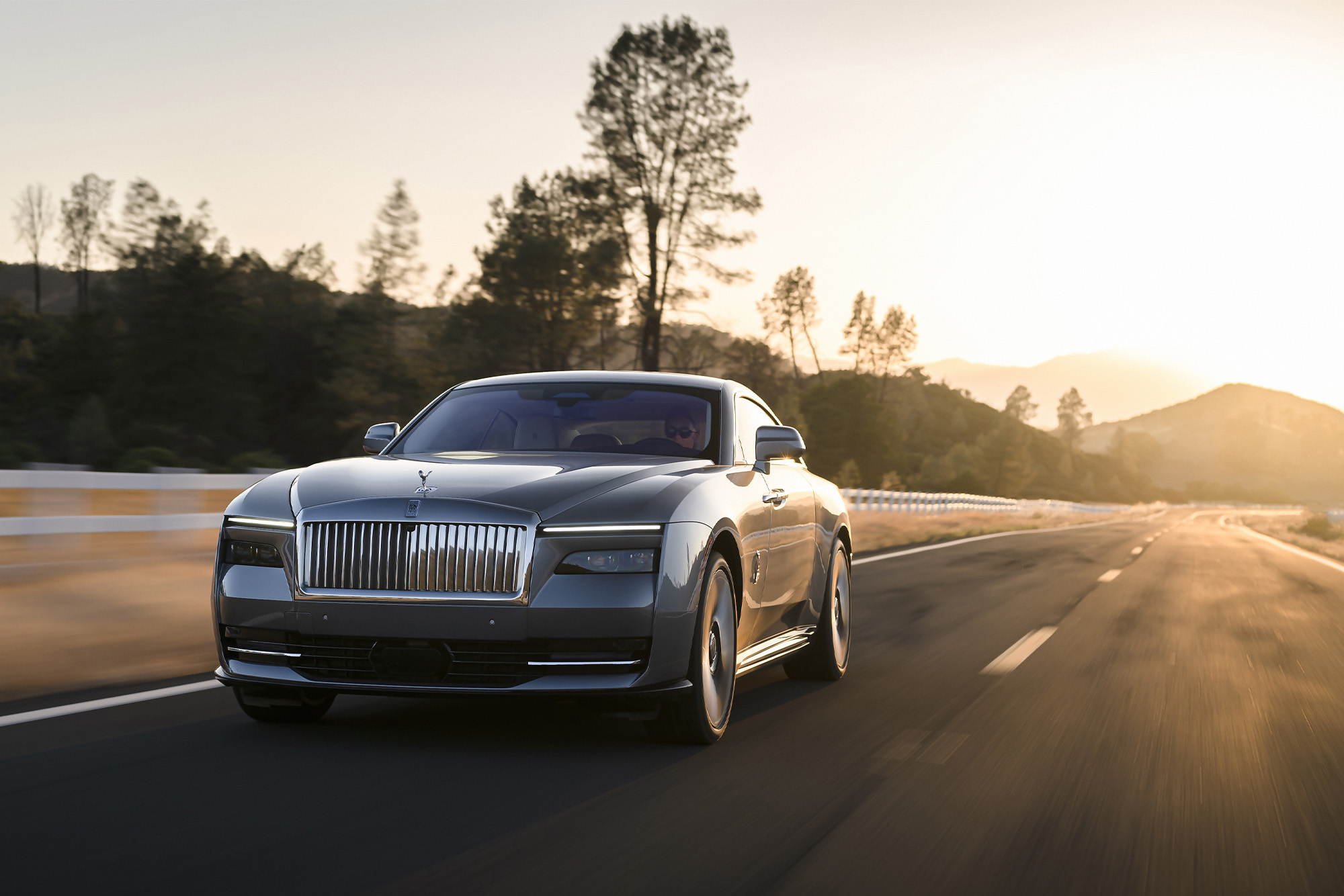Ghost in the (Electrified) Machine: Driving the New Rolls-Royce Spectre
After driving the new Rolls-Royce Spectre, two things are clear. Firstly, fabled brand is eager to prove that an electric vehicle can be every inch the luxury car that Charles Rolls and Henry Royce set out to create at the beginning of the twentieth century. And secondly — and perhaps more tellingly — this car is legitimately, faithfully, irrefutably still a Rolls-Royce.
Of course, we never questioned that an electric drivetrain from the British carmaker would be anything other than the ultimate technological achievement. After all, this is a brand whose engines have been revered for their turbine-like smoothness and near-silent operation for generations. But, through innovation, the team at Rolls-Royce has made doubly sure of its success with the Spectre and delivered a car unlike anything we’ve ever driven.




A little over a decade ago, the brand’s future-facing 102EX concept showed the world what an electric Rolls-Royce might look like. And, whilst we at SHARP thought it was a genius move at the time, customers were less convinced. To them, the big, smooth, powerful V12 engines they’d usually find under the bonnets of these cars were inextricably linked to Rolls-Royce’s identity. Without them, how would it work? How could an electric Rolls-Royce be a Rolls-Royce first — and an EV second? Thankfully the Spectre, a spiritual successor to the Phantom Coupé, shows us just how significantly times have changed and, more interestingly, how the customer has changed.

That’s not to say that existing Rolls-Royce customers won’t feel at home in the Spectre, though. They most assuredly will. In fact, they may not even notice it’s powered by electrons rather than hydrocarbons because the experience of driving the Spectre is still thoroughly “Rolls-Royce.” The veneers remain veneers, supple hides continue to upholster seats and surfaces, and the vanes of the vents are still made from steel. And each of these elements is crafted to perfection.
Most importantly, however, the driving experience has been carefully tuned by the brand; engineered to emulate the acceleration curve of its beloved V12 models. It’s rather brisk, should you want it to be, but nowhere near as stomach- churning or lurching as many other electric offerings. This isn’t a toy or a juvenile experiment with electric drivetrains. It’s a luxury conveyance, one carefully calibrated to effortlessly spirit drivers and passengers to their destinations.

Sure, you can one-pedal drive the Spectre and use the motors to slow the vehicle while simultaneously returning charge to its battery, but you can also elect to turn this feature off and only use the brake pedal (which also regenerates energy). And yes, there may be a synthesised propulsion sound — a ghostly, ethereal whisper so subtle you might not even notice it at first — but this can also be turned off if you wish. Without it, there is no sound whatsoever, and that would be our preference.
The exterior and interior colour choices are as limitless as ever, but perhaps the most noteworthy new feature inside the cabin is the extension of the brand’s iconic, high-intensity LED “Starlight” headliner all the way to the doors. It’s a magical experience, cruising down a winding road in the dead of night, surrounded by a sparkling simulacrum of the Milky Way. That said, it would be hard to resist any of the beautiful wood veneer options, adornments also offered across the doors and throughout the rear cabin (which is itself more luxury lounge than car interior).
After a day driving the Spectre, it’s not difficult to imagine how one might benefit from owning one. The cosseting silence would come in handy during your commute, especially after a long day at work, and its resplendent style would work wonders to elevate a night on the town or when hosting a weekend getaway — for up to four adults. Your author is 6’5”, and was comfortable in the backseat, which is nothing short of remarkable.
During the course of the last decade, it’s become increasingly important for carmakers to flex their technological chops — and not just regarding drivetrains. Rolls-Royce has long been revered for its “magic carpet” ride quality, and the Spectre continues to refine this feature. It is, simply put, the smoothest-riding vehicle we have ever driven. And, while this may be a case of diminishing returns (a Range Rover is 95% as smooth as the Spectre, but it’s that last 5% that a Rolls-Royce customer both expects and is happy to pay for), the effect it offers is often uncanny, even otherworldly. A suite of cameras, wheel sensors, and GPS operate in unison to ensure everything is working smoothly; anticipating what the suspension must do to smother any and all road imperfections. You’ll spot faults and flaws on the road ahead, but never feel them. And that disconnect is astonishing.



The range of an EV has also become an inescapable metric for these cars, and the Spectre’s (at around 500 kilometres) was set to ensure it equalled Rolls-Royce’s gas-powered models. In Europe, where grand touring is a legitimate way to travel, 500 klicks will get you from one truly excellent hotel to another — and in a different country, no less. According to Rolls-Royce’s prospective EV customers, this is a reasonable distance to travel without charging and could get you from Cannes to Como in one journey. Worst case scenario: you’re forced to throw in a ten-minute splash of fast-charging at a French highway service while sipping an excellent coffee.
Of course, with a price tag of half a million dollars, the Spectre costs a fair few cappuccinos. But it’s the ultimate expression of fine craftsmanship and bespoke possibility — the epitome of getting what you pay for — and represents irrefutable value for those who can afford it. In a few years, all Rolls-Royces will be electric and, while the V12 will always be held in high esteem by brand enthusiasts, the Spectre heralds a future in which exceptional motoring will not only be more refined than ever, but also simultaneously made sustainable for the sake of generations to come.

















